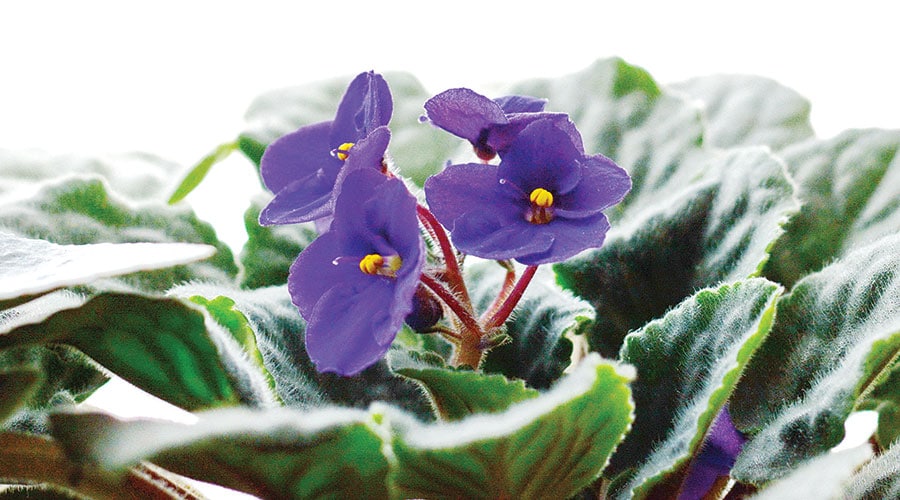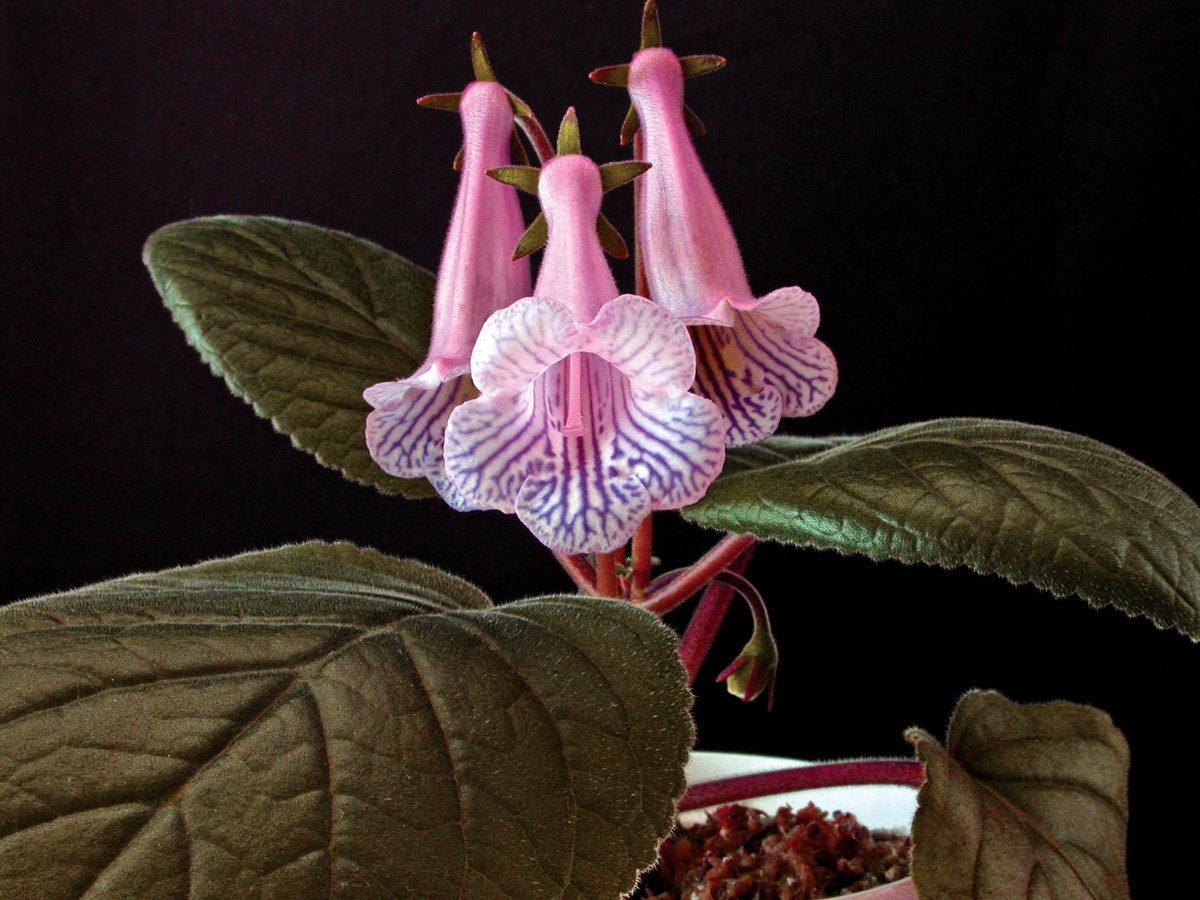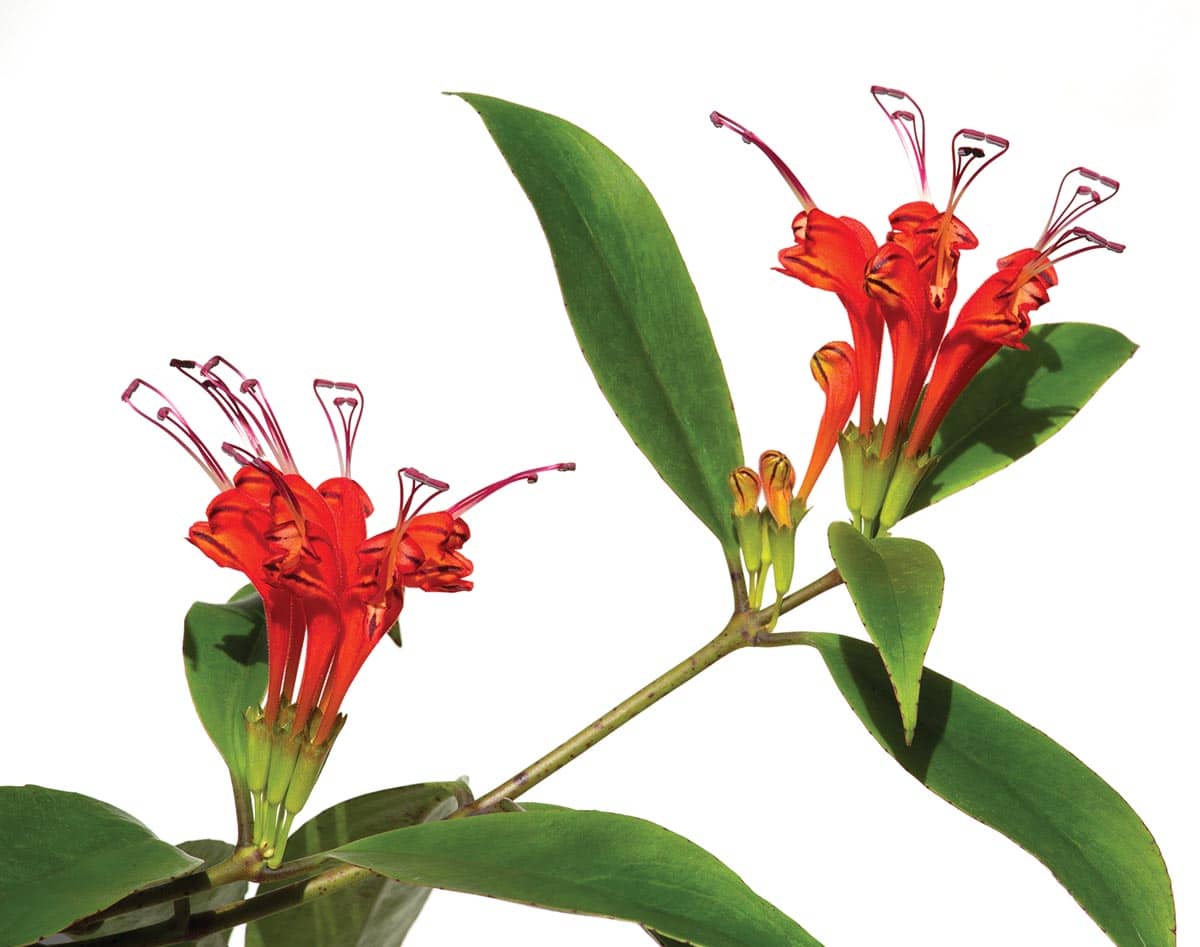
Beyond the African violet
By Babs Rodriguez
In a time when there’s no end of devotion to succulents, drought-resistant native perennials and big-leaf potted plants (monstera, we’re looking at you), we’d like to give a shoutout to the tropical flora called gesneriads — the family name of a wildly diverse clan.
African violets, the best-known cousins, unfairly suffer from a dowdy reputation, but you should know that there are more than 3,000 (and growing) gesneriads, with 88 genera. We especially like the bold attitude of the genus Achimenes, because indoor/outdoor plants named ‘Red Elf’ and ‘Tiny Red’ are our kind of divas. But other surprising genera deserve love, too: the lipstick plant (Aeschynanthus radicans) and the goldfish plant — Columnea gloriosa and Nematanthus gregarious are fishy cousins — to drop a couple of better-known names. If these showy bloomers seem far removed from the plants you associate with grandmother’s greenhouse, know this: There is nothing predictable about gesneriads, and family resemblances can be hard to spot.
Every species promises interesting foliage, whether for color or texture, and blooms range from fiery-red clusters to rosy, freckle-faced trumpets, white stars and apricot flutes. Some trail from baskets, others stretch tall. Many bloom more than once a year, but even the shyest African violets can be tricked into blooming more frequently (for one thing, they bloom best when root-bound).
Whether you grow them for the flowers or the leaves, the plants’ exotic beauty is a given. The happily-ever-after? For all their otherworldly elegance, they are among the easiest of houseplants to grow. And if it’s an outdoor plant you’re looking for, Achimenes can be grown in pots placed where they get at least eight hours of indirect sunlight.
Exotic and easy? Count us in.
Gesneriads are easy to propagate, even from tiny cuttings. Producing seed is also relatively easy. That’s why breeders are constantly creating new flower colors and exotic patterns on petals and foliage. For the rest of us, the rules are simple.
Light Keep it bright, but indirect.
Water Soak thoroughly (collected rainwater is best). Let the soil dry to about ½-inch deep before watering again.
Soil Gesneriads don’t like to get dirty. Well-drained, sterilized mix for African violets is available at area nurseries — just be sure it is at least 30 to 50 percent vermiculite or perlite.
Fertilization Don’t overdo it. Use about ¼ teaspoon of fertilizer per gallon of water each time you give the plants a drink. Use about half the suggested amounts on commercial plant food.
THE DETAILS
Archie’s Gardenland stocks a variety of African violets and gesneriads, including lipstick and goldfish plants, as well as fertilizer and planting mediums.
6700 Z Boaz Place, Fort Worth, 817-737-6614, archiesgardenland.com
An excellent source for buying gesneriads online is Lyndon Lyon Greenhouses, lyndonlyon.com.
The Lone Star African Violet Council’s scuttled 2020 convention is now set for Oct. 27-30 at the Radisson Hotel in Fort Worth; see the website for more information, lsavc.org.
The Moonlight African Violet & Gesneriad Society meets at the Fort Worth Botanic Garden every fourth Thursday of the month at 7 p.m.
Visitors are welcome. Follow on facebook.com/moonlightavg for updates on future meetings, plant shows and sales.
Want to learn more? Visit the Gesneriad and African Violet societies’ websites, gesneriadsociety.org and avsa.org.



